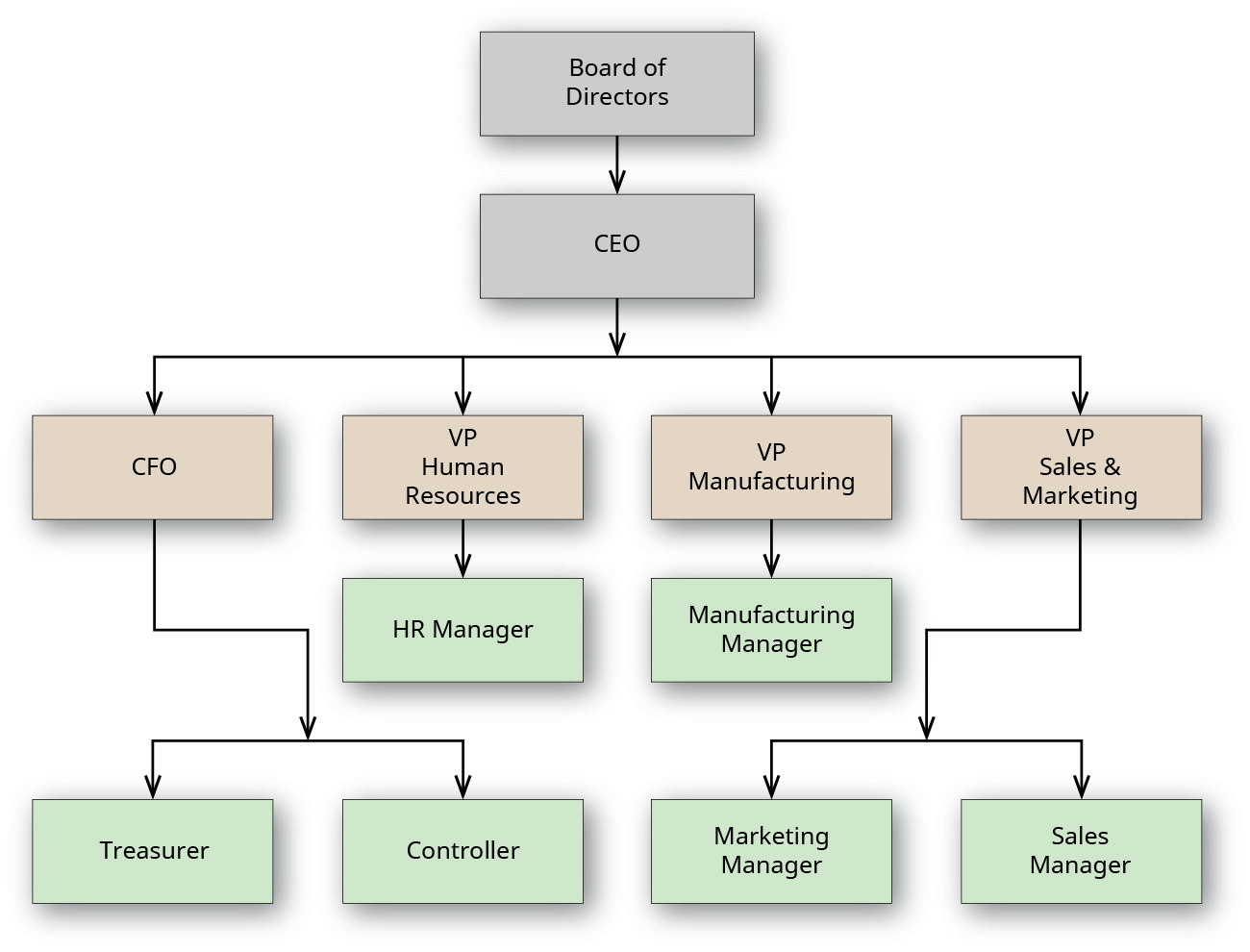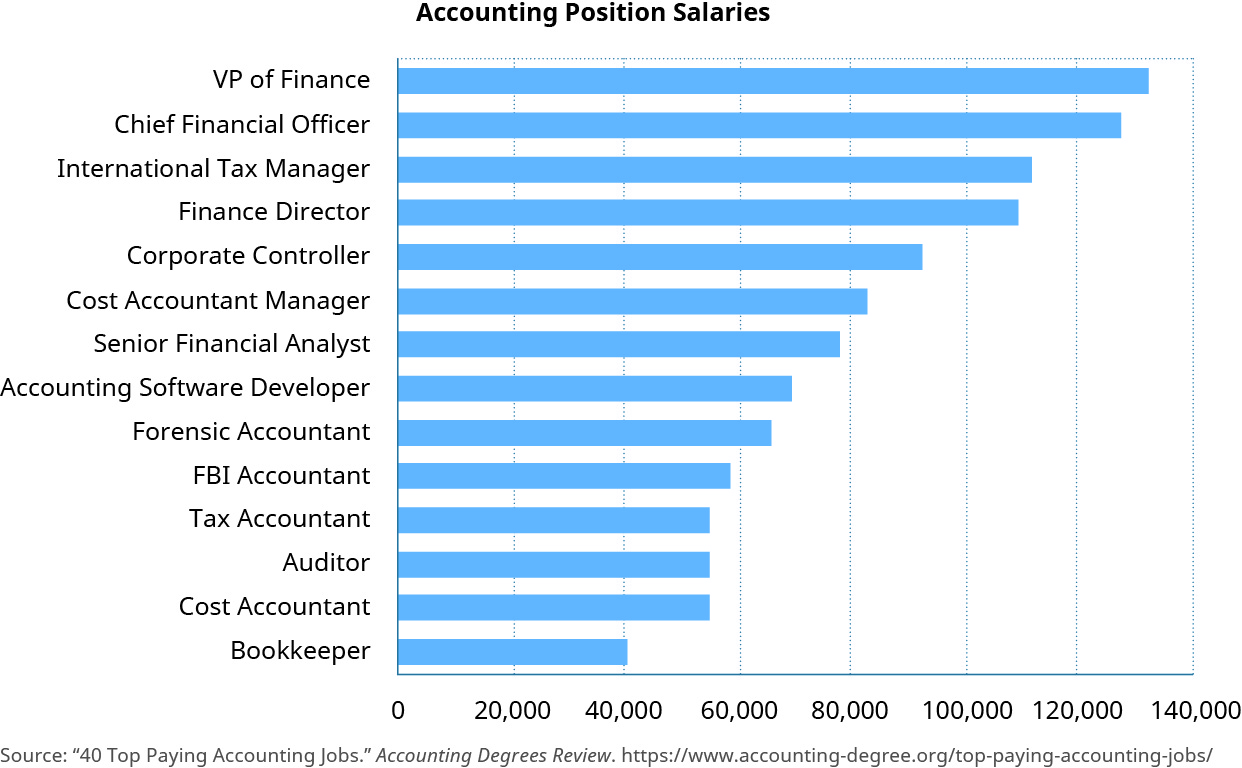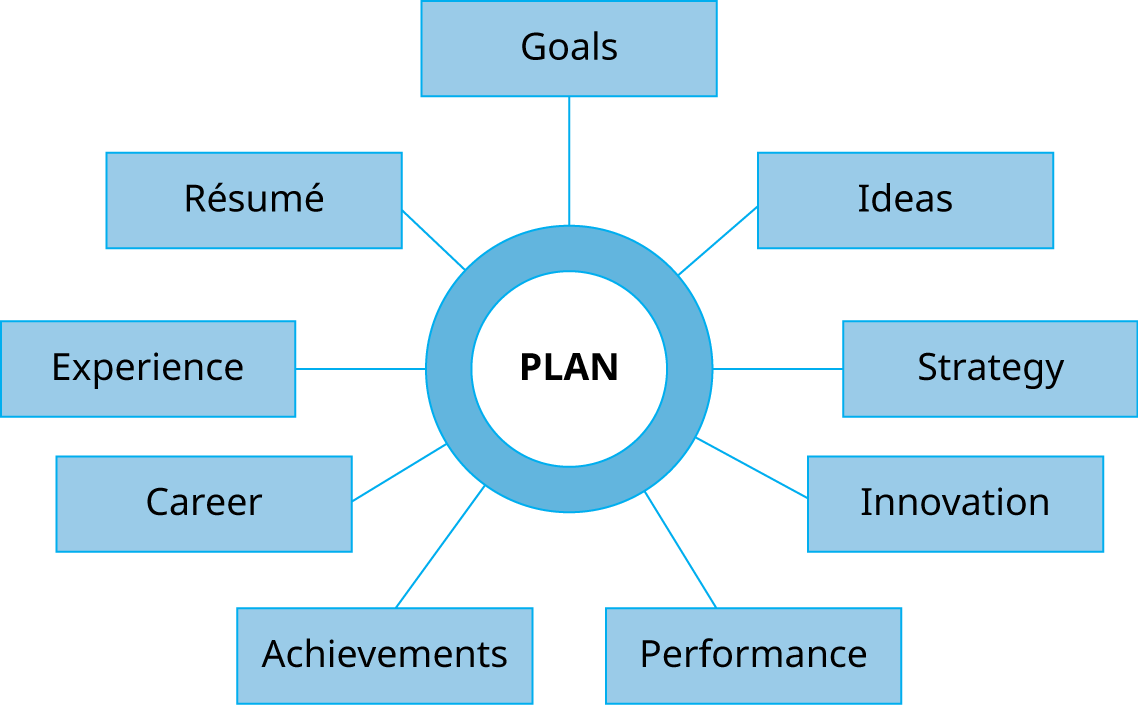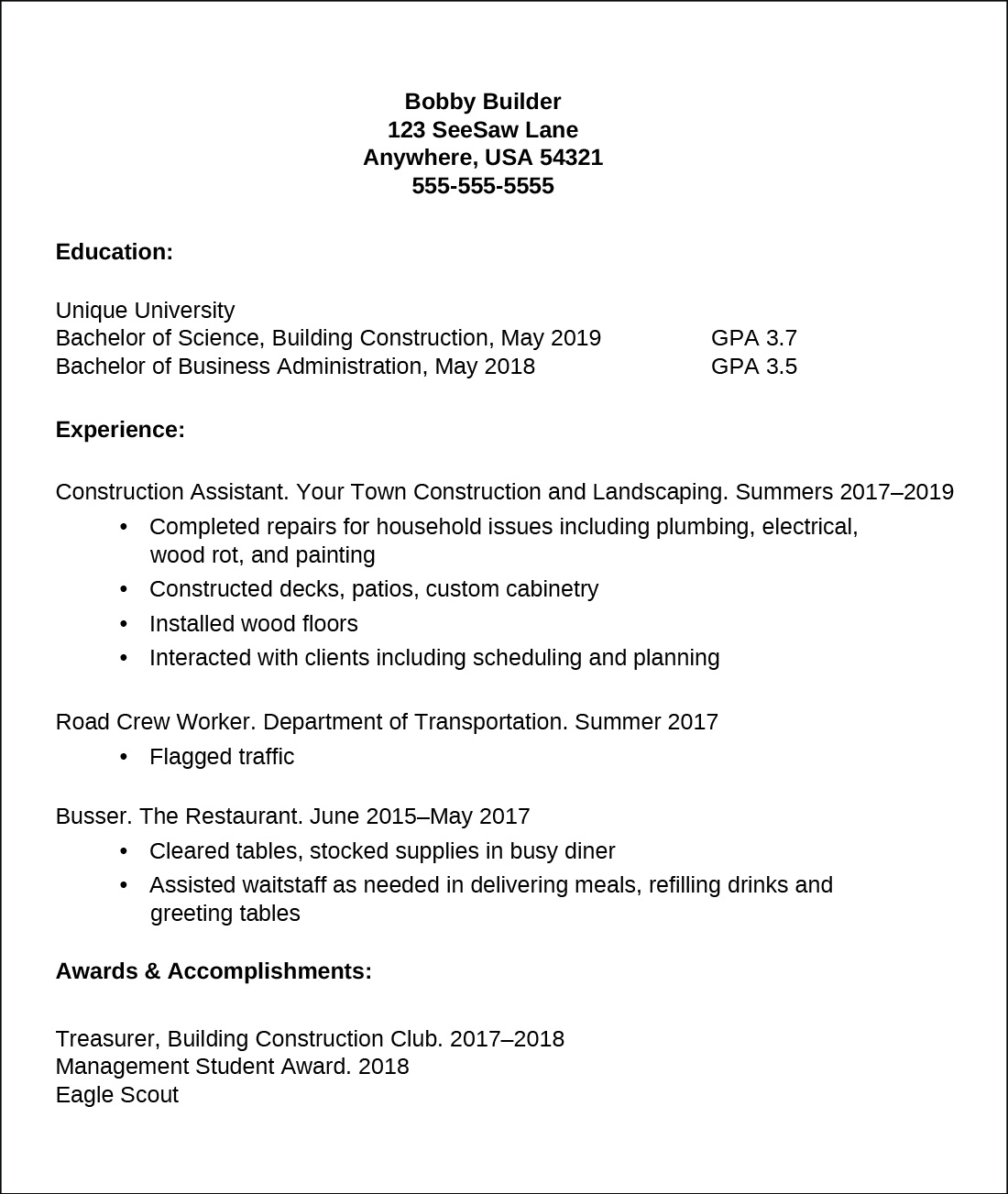6.2 Roles & Duties of Managerial Accountants
It is clear that management accountants must have a solid foundation in accounting, in both financial and managerial accounting, but other than accounting skills, what makes good managerial accountants?
- They must have knowledge of the business in which they are working. Commercial awareness is knowing how a business is run and how it is influenced by the external environment and knowing and understanding the overall industry within which the business is operating.
- Collaboration, which involves working in cross-functional teams and earning the trust and respect of colleagues in order to complete a task, is vital to improving managerial accounting talents. They should be “team players.”
- Management accountants should have effective communication skills that allow them to convey accounting information in both written and oral forms in a way that the intended audience can understand. Being able to gather the data quickly and accurately is important, but the data is meaningless if it is not presented in an intuitive style that the audience can understand.
- Strong technology skills are also essential. These skills include not only accounting and reporting software but also other programs that would assist in automating processes, improving efficiencies, and adding value to the company. For many companies, additional software and accompanying technology are often needed for both their financial and managerial accounting functions. For example, enterprise resource planning (ERP) systems often play a major role in the creation of comprehensive accounting systems. This additional support is often provided by outside suppliers such as Hyperion, Cognos, Sage, SAP, PeopleSoft, and Oracle.
- Managerial accountants must possess extensive analytical skills. They must regularly work with financial analysts and management personnel to find ways to reduce expenses and analyze budgets. These skills include the ability to envision, verbalize, conceptualize, or solve both multifaceted and simplistic problems by making choices that make sense with the given information.
- Managerial accountants must have ethics and values. They should be an example to others and encourage them to follow internal control practices and procedures.
Managers at all levels make many different types of decisions every day, but to make most decisions, they need specific information. Some information is easily obtainable, and some is not. Managers do not always know what information they need or what is available, and they need to know if the decisions they make are having the desired outcome and meeting specific goals.
To this point, we’ve described managerial accounting as a process. The following definition considers it a profession. Management accountants are the individuals who help management with this information. The Institute of Management Accountants (IMA) defines management accounting as “a profession that involves partnering in management decision making, devising planning and performance management systems, and providing expertise in financial reporting and control to assist management in the formulation and implementation of an organization’s strategy.”4
The IMA also reports that nearly 75 percent of financial professionals work in business as management accountants in positions such as financial analysts, accounting managers, controllers, and chief financial officers.5 These professionals have a significant impact on businesses through influencing the decision-making process and business strategy.
Management accountants work at various levels of the organization, from the project level to the division level to the controller and chief financial officer. Often, management accountants work where they are needed and not necessarily at corporate headquarters. They tend to be hands-on in the decision-making process. They need many types of information to inform the many decisions they must make.
| Profession | How They Use Managerial Accounting in Their Industry |
|---|---|
| Engineer | Properly track and report the use of resources involved in an engineering project; measure and communicate costs of a project and its outcomes |
| Mayor | Put together a budget, a planning and control mechanism that plays an important role in every government |
| Nurse | Track operating or service costing per patient, or per unit |
| Mechanic | Use job costing to figure total costs and overall profitability on each job |
| Retail store manager | Forecast inventory needs, review profit margins, and track sales margins on individual products as well as entire stores |
| Restaurant owner | Calculate the cost of serving a single table by estimating the cost of the food plus time of server, keep food costs under control through inventory tracking |
| Architect | Track direct and indirect costs for each job; track profitability per job |
| Farmer | Calculate yields per field, analyze fertilizer and seeding rates, and control waste |
Organizational Structure
Most companies have an organizational chart that displays the configuration and the delegation of authority in the decision-making processes (Figure 6.2). The structure helps define roles and responsibilities. The organizational charts provide guidance to employees and other stakeholders by outlining the official reporting affiliations that direct the workflow within the organization. If the company is particularly efficient, it also will include contact information within the chart. This is a convenient directory to circulate among employees. It helps them find a particular person in a certain position, or determine whom to speak to about certain areas within the company, or even identify a specific person’s supervisor to report positive or negative work behavior.

Careers
The field of managerial accounting, or corporate accounting, is composed of the financial and accounting responsibilities required to operate any type of business. Managerial accountants are employed within organizations to monitor costs, sales, budgets, and spending; conduct audits; predict future requirements; and aid the executive leaders of the organization with financial decision-making.
Figure 6.3 lists approximate salaries for several financial and managerial accounting employment positions. In reviewing the salary information, be aware that there are often major variances in salaries based on geographical locations. For example, a cost accountant manager in San Francisco, California, would typically be paid significantly more than an accountant in a similar position in Fayetteville, Arkansas. However, the cost of living, especially housing costs, in San Francisco is also significantly higher than the cost of living in Fayetteville.

Managerial accountants find employment opportunities in a wide variety of settings and industries. Professionals in this discipline are in high demand from public and private companies, government agencies, and not-for-profit entities (NFPs). Some areas of management accounting are versatile to any sector (corporate, government, or NFP).
- A financial analyst assists in preparing budgets, tracking actual costs, examining task performance, scrutinizing different types of variances, and supporting other management personnel in organizing forecasts and projections.
- A budget analyst arranges and manages the master budget and compares master budget projections to actual results. This individual must be vastly aware of all operations in the budget and work closely with the rest of the accounting staff as well as management personnel.
- An internal auditor typically reports to high-level executives within the company. An internal auditor is often called on to investigate budget variances, industrial sabotage, poor work quality, fraud, and theft. He or she also safeguards the internal controls and confirms they are working and effective.
- A cash-management accountant has responsibilities that include transferring monies between accounts, monitoring deposits and payments, reconciling cash balances, creating and tracking cash forecasts, and performing all other cash-related financial processes.
Other areas of managerial accounting are specific to the sector in which accountants work. For example, the area of cost accounting is more specific to the corporate or manufacturing sector. These cost accountants amass large sums of data, checking for accuracy and then formulating the cost of raw materials, work in process, finished goods, labor, overhead, and other associated manufacturing costs.
Governmental entities also use accounting to communicate with their constituents. Government agencies include all levels of government, federal, state, county, and city, including military, law enforcement, airports, and school systems. Government accountants deal with budgets, auditing, and payroll, the same as all other managerial accountants. However, they must follow a different set of accounting rules called the Governmental Accounting Standards Board (GASB).
Nonprofit (not-for-profit) organizations are tax-exempt organizations that serve their communities in a variety of areas, such as religion, education, social services, health care, and the arts. Managerial accountants in this area are most often focused on budgets. The biggest difference between a corporate budget analyst and a nonprofit budget analyst is that the nonprofit analyst works the budget backward, compared to the corporate analyst. For example, if a corporation was selling widgets, its budget would start with a sales forecast of how many widgets the company thinks it can sell. This gives the company a forecast of how much it can spend on expenses and fixed assets. The nonprofit budget analysts often start with the expenses. They forecast how much the expenses will be in order to continue to offer their service to the community. From there, they then adjust how much they will need to obtain through fundraising, donations, grants, or other sources to meet their expenses.
YOUR TURN
Career Planning
All companies need to plan ahead in order to continuously move forward. Their top management must take into consideration where they want the company to be in the next three to five years. Just like a company, you also need to consider where you want to be in three to five years, and you need to start taking strides now to accomplish what it is you need to in order to get there (Figure 6.4).

Answer the following:
- What job would you like to be doing in three to five years? What is your plan for getting there? Identify five to ten steps needed.
- Do you have a specific company you would like to be working for in the next three to five years? What are the reasons you want to work for them?
- In order to acquire the position you want, at the company you want, you need a résumé. Your résumé is like the company report of “you.” It needs to offer reliable information about your experiences and achievements. What are the basic elements of a résumé, and how will you provide reassurance that the information on your résumé is trustworthy?
Solution
Answers will vary. Sample answer:
- I would like to own my own home remodeling company. Steps to get there include the following:
- complete double major in business and building construction
- in the summers before graduation, work for a local handyman franchise
- after graduation, work for a home builder as a project manager
- while working, save money for five years to be used to start my own company
- put together a business plan
- start my own business six years after graduation
- I would like to work for a national home builder such as Pulte or Toll Brothers. Ideally, I would have an internship with one of them during college. I would like to work for a national builder or a large regional builder because they already have a good business model and I could learn how that works.
- My résumé needs to contain my education information such as the degree and my majors as well as classes that are pertinent to my career. It should also indicate all of my work experience and any particular skills or certifications I have achieved, such as Eagle Scout. An example of how this information may be presented on a résumé can be seen in Figure 6.5.

Figure 6.5 Sample Résumé By: Rice University Source: Openstax CC BY-NC-SA 4.0 Long Description
Certifications
There are many distinct accounting certifications that accountants can earn in order to improve their careers, attain promotions, and acquire raises in their pay. The certifications are somewhat different from each other and focused toward different career paths. Many accountants have more than one of these credentials to diversify their paths.
The Certified Public Accountant (CPA) is considered the top tier in accounting certifications. Many companies or positions require CPA certification. For example, most employees at accounting firms earn a CPA certificate within the first few of years of graduation. Some positions, such as controller or CFO, often require CPA certification. In the United States, each state has different educational and experience requirements in order to obtain the CPA. The certification requires passing the four-part CPA exam as well. This is administered by the American Institute of Certified Public Accountants (AICPA). There are four parts to the exam: Financial Accounting and Reporting (FAR), Auditing and Attestation (AUD), Regulation (REG), and Business Environment and Concepts (BEC). Each part is graded on a 100-point scale. A score of seventy-five or greater must be achieved in order to pass each section. The exams can be intimidating, as it is a difficult process to go through. As of 2017, the AICPA reported a pass rate of less than 50 percent, which may contribute to its high regard around the world. After passing the CPA exam, candidates must work for one year under the supervision of a licensed CPA before their own license is approved by a state regulatory agency. Those certified in public accounting work in all areas of accounting. However, do not assume that being a CPA is the only way to secure an excellent position in accounting.
The Certified Management Accountant (CMA) is another top-tiered certification for accountants. The CMA title identifies the individual as a specialist in corporate accounting management. The CMA has some overlap with the CPA, but the CPA is focused more on compliance, tax, and controls. CMAs favor financial analytics, budgeting, and strategic assessment. This certification requires the minimum of a bachelor’s degree from an accredited college or university, two years of work experience, and successfully passing both parts of the exam. Part one of the exam covers financial reporting, planning, performance, and controls. Part two focuses on financial decision-making. The exam is administered by the IMA and has a 50 percent passing rate globally.
Not as popular in the United States as the CPA, the Certified Financial Analyst (CFA) certification is more in demand throughout Europe and Asia. This certification prepares accountants for a career in the finance and investment domains. Requirements of this credential include a bachelor’s degree or four years’ worth of experience, plus passing all three sections of the exam. The exam is administered by the CFA Institute. There are three separate exams, each one taking up to six hours to complete. The exams must be completed in succession. This credential is considered one of the more rigorous ones to obtain, with a passing rate of less than 45 percent.
The Enrolled Agent (EA) credential focuses on a career in taxation, whether it is working in tax preparation for the public, internally for a corporation, or for the government at the Internal Revenue Service (IRS). The EA certification was created by the IRS to signify significant knowledge of the US tax code and the ability to apply the concepts of that code. Enrolled agents have the privilege of being able to sign tax returns as paid preparers, and they are able to represent their clients in front of the IRS. The EA certification can be obtained by passing a three-part exam covering all types of individual and business tax returns. Once the certification is obtained, enrolled agents must follow strict ethical standards and complete 72 hours of continuing education courses every three years.
The Certified Internal Auditor (CIA) is a credential offered by the Institute of Internal Auditors (IIA) and is one of the only certifications that is accepted worldwide. CIAs tend to be employed in auditing areas within government agencies, banking, finance, or corporations. They examine financial documents to investigate deficiencies in internal controls. Requirements for this certification include a bachelor’s degree, two years of work experience in a related field, and passing the three sections of the examination. Also required are providing character references, following a code of ethics, and continuing education.
The Certified Fraud Examiner (CFE) certification signifies proven proficiency in fraud prevention, detection, and deterrence. CFEs are instructed in how to identify the red flags that may indicate fraudulent actions. The designation is awarded by the Association of Certified Fraud Examiners (ACFE) after applicants have met the following requirements: bachelor’s degree, two years of work-related experience, moral character references, and the passing of four separate exams.
The Certified Government Auditing Professional (CGAP) designation is exclusively for auditors employed throughout the public sector (federal, state, local) and is offered by the IIA. Requirements for this credential are the same as for the CIA. The exam has 115 multiple-choice questions and covers four areas focusing on proficiency in generally accepted government auditing standards (GAGAS).
These certifications lead to different job responsibilities and different career paths. As indicated, each of the certifications requires varying degrees of education and has exams that are unique to that particular certification. All of these certifications also require a certain number of hours of continuing education in order to keep the certification active. This ensures that the certificate holder is up to date on changes in the field. There are always many opportunities throughout the year to obtain continuing education credits through seminars, webinars, symposiums, and online and in-person classes.
Long Descriptions
A chart outlines workflow for an organization. At the top is the board of directors. Below that is the CEO. The line below that is CFO, VP Human Resources, VP Manufacturing, and VP Sales and Marketing. Below the CFO is Treasurer and Controller. Below VP Human Resources is HR Manager. Below VP Manufacturing is Manufacturing Manager. Below VP Sales and Marketing is Marketing Manager and Sales Manager. Return
A graph shows salaries earned for various accounting positions. Rounded, the graph display shows these earnings: VP of finance earns $133,000, chief financial officer earns $128,000, international tax manager earns $112,000, finance director earns $110,000, corporate controller earns $93,000, cost accountant manager earns $83,000, senior financial analyst earns $78,000, accounting software developer earns $70,000, forensic accountant earns $65,000, FBI accountant earns $59,000, tax accountant earns $55,000, auditor earns $55,000, cost accountant earns $55,000, bookkeeper earns $41,000. Source information: 40 top paying accounting jobs, accounting degrees review. Return
A sample résumé starts with the following information at the top, centered: Bobby Builder; 123 SeeSaw Lane; Anywhere, USA 54321; 555-555-5555. The first section is labeled Education. It lists Unique University; Bachelor of Science, Building Construction, May 2019, GPA 3.7; Bachelor of Business Administration, May 2018, GPA 3.5. The next section is labeled Experience. It lists Construction Assistant. Your Town Construction and Landscaping. Summers 2017 to 2019. Below this line are bullet points: Completed repairs for household issues including plumbing, electrical, wood rot, and painting; Constructed decks, patios, custom cabinetry; Installed wood floors; Interacted with clients including scheduling and planning. Next is Road Crew Worker. Department of Transportation. Summer 2017. Below this line is the bullet Flagged traffic. Next is Busser. The Restaurant. June 2015 to May 2017. Below this line are the bullets Cleared tables, stocked supplies in busy diner; Assisted wait staff as needed in delivering meals, refilling drinks, and greeting tables. The next section is Awards and Accomplishments. It lists Treasurer, Building Construction Club. 2017 to 2018; Management Student Award. 2018; Eagle Scout. Return

